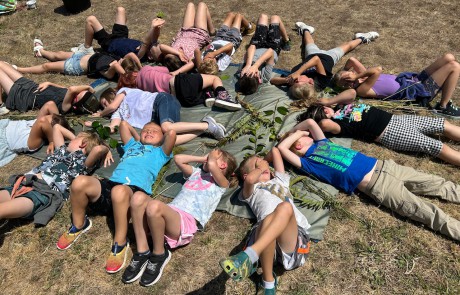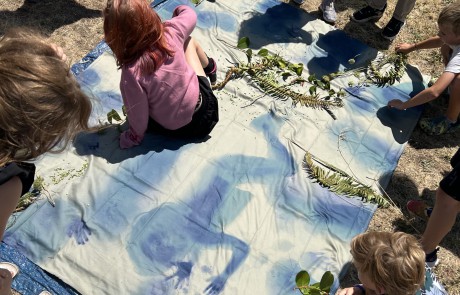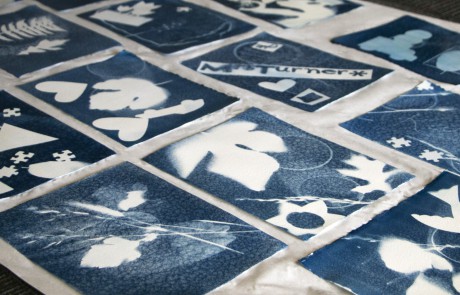Project Description
The worlds of Art and Science come together in this fun, exploratory experience. During this residency, students will learn about one of the earliest photographic processes, the cyanotype, and expand their definition of what photography means. Students will learn about the earliest woman photographer, Anna Atkins, and make cyanotypes first emulating her work, and then in their own artistic voice, which will be exposed to sunlight and washed by hand.
Final Product
At the end of this workshop, each student will have their own cyanotype photogram(s) to display at home.
Learning Outcomes
- Students will develop a brief understanding for the history of photography and an expanded definition of what constitutes a photograph.
- Students will have reinforced how science can be used creatively, sometimes with unexpected (and beautiful) results.
- Students will be able to discuss their images using vocabulary specific to the printing process.
- Students may be exposed to conceptual art-making by reflecting on the color blue and how they might visually convey an idea or feeling associated with a specific color.
- Students will be introduced to several basic design principles, which will be taught to help them create a visually interesting composition with the provided materials.
- Students will learn how to safely work with photographic chemistry, either through safely applying cyanotype formula to their own paper (older grades) or through a demonstration of how the chemicals are applied (K-5).
Suggested Grades
- Kindergarten-12th grade
Pricing Breakdown
- 4 visits at 45 minutes each
- Prep hours: 3 hours per classroom
- Materials: $3 per student
- Travel from Eugene
*This residency requires access to the outdoors to create the photograms. Access to water is helpful, but not required.
Testimonials
“Yaro was very flexible with us and our students. She did a great job of building up their background knowledge and vocabulary. They had a lot of fun learning something new. We have a variety of behaviors and attitude toward education in our classrooms, but Yaro was able to bring something super exciting yet adaptable to each student’s needs. This was a great experience. We are very happy.”
—3rd grade teacher in Bethel SD
Why I teach art:
“I love to teach art because I believe in art’s power to transform. We are born naturally curious investigators of this world; art gives us a means through which we can ask questions and seek answers. Art empowers us to discover – ourselves and our world.”
—Yaro Shon Neils










